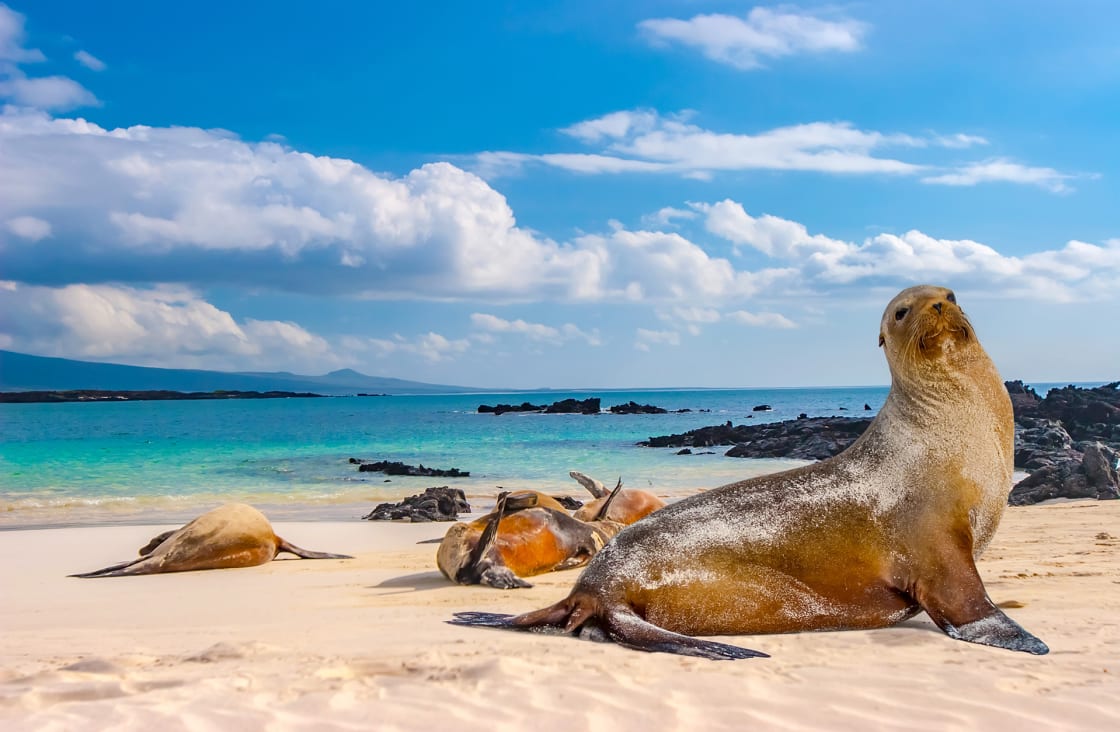
The Galapagos are a veritable treasure trove when it comes to endemic species. Nowhere else on Earth can you find such a high concentration of unique wildlife. In fact, due to the remoteness and specific characteristics of the Galapagos, more species are endemic to the islands than not, and most endemic species have at least two subspecies, diverging to better adapt to each island. Perhaps the most famous example of this are the islands’ famous giant tortoise (Geochelone Elephantopus) which has 11 subspecies (of an original 14). The astonishing levels of biodiversity and endemism are perhaps best shown in the table below.

Wildlife
Note: ‘species’ only refers to resident or native species – there are many more introduced or migratory species seen in the islands / Source: WWF Galapagos Ecoregion Data
For our endemic species list we’ll focus on the reptiles, birds and mammals that are most likely to be seen. You’ll notice that most of the species are reptiles and birds, rather than mammals. This is related to the ease with which various species have been able to travel long distances across the ocean to colonize the Galapagos – birds obviously fly, whilst reptiles float or drift on vegetation rafts. The latter strategy is a much harder option for mammals who are vulnerable to strong sun exposure and cannot survive long without food or water. The astonishing levels of endemism in Galapagos provide a fascinating insight into the workings of natural selection and a plethora of invaluable evidence in support of Darwin’s theory of evolution.
From fur seals to finches, giant tortoises to marine lizards, we’ve uncovered some of the most charismatic endemic Galapagos species that can only be seen on these enchanted isles and nowhere else.
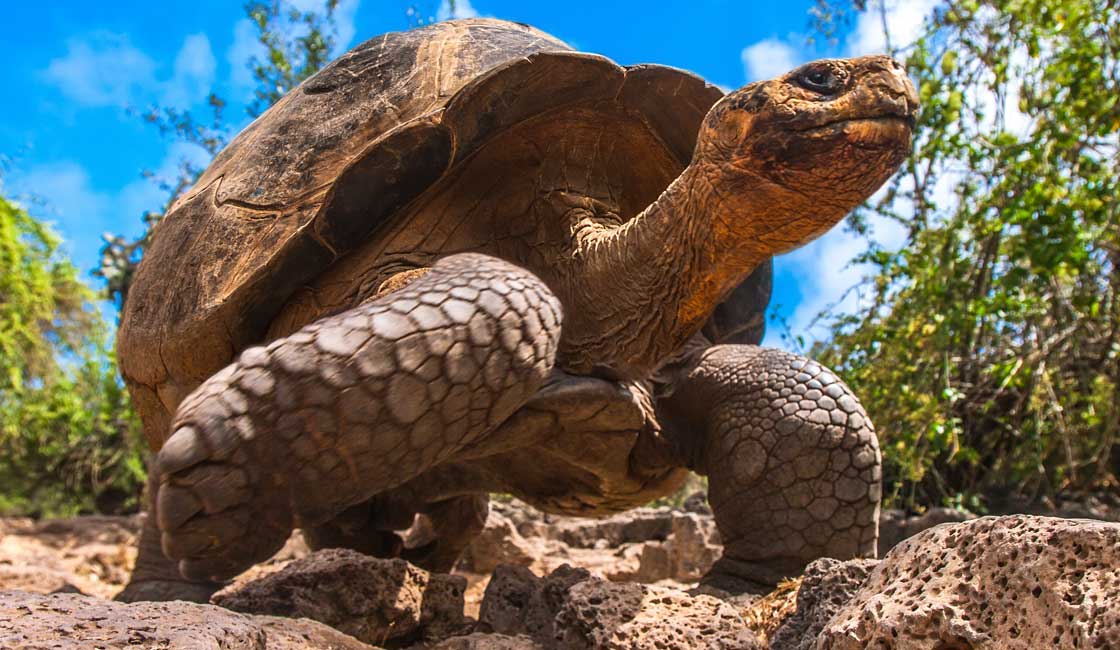
Galapagos tortoise
Giant tortoises are one of the most iconic animals of the Galapagos, being top of most visitor wish lists and a flagship species for conservation efforts across the islands. They are the largest tortoises in the world, averaging a hefty 70 pounds, as well as being the longest-living vertebrates on the planet, with life spans exceeding 100 years. The Galapagos are home to two tortoise sub-types, those with saddle-shaped shells and those with dome-shaped shells, with each one exhibiting specific environmental adaptations that provided important evidence in support of natural selection. Although Galapagos tortoises have few, if any, natural predators, they have unfortunately been subject to significant human exploitation over the centuries, decimating their numbers and leading to the extinction of several sub-species. Today, the population is on the rebound, totaling around 15,000, with 11 out of the original 15 subspecies found across 10 of the islands.
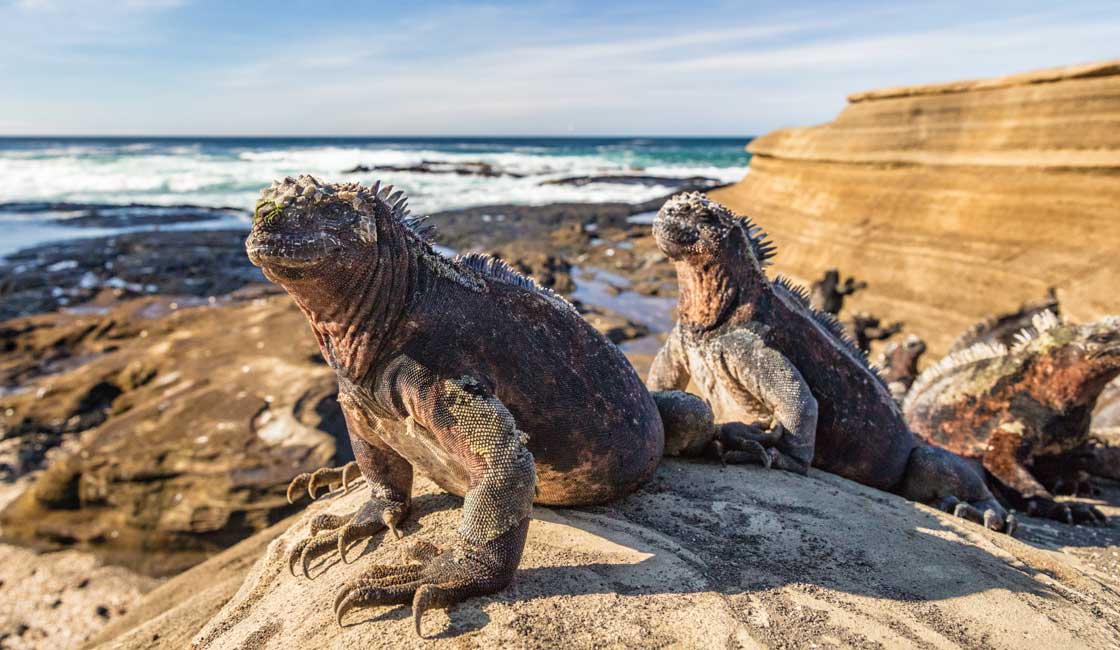
Marine Iguana
Marine iguanas are another famous endemic species that made extraordinary environmental adaptations through evolutionary time. All other species of iguana are land-based animals and do not swim unless they have to. However, the original iguanas that came to the Galapagos, millions of years ago, gradually adapted to island life over time. They took to the ocean where they could exploit additional food sources, such as algae, especially as the land provided limited nutritious vegetation. They also developed an ability to breathe underwater, diving to depths of up to 30 feet, and are now the only living marine lizard on the planet. Marine iguanas are usually grey or black (which helps them absorb more precious heat from the sun) but develop striking green or red coloration during mating season. They are commonly spotted in abundance basking on the seashore across all the Galapagos islands.
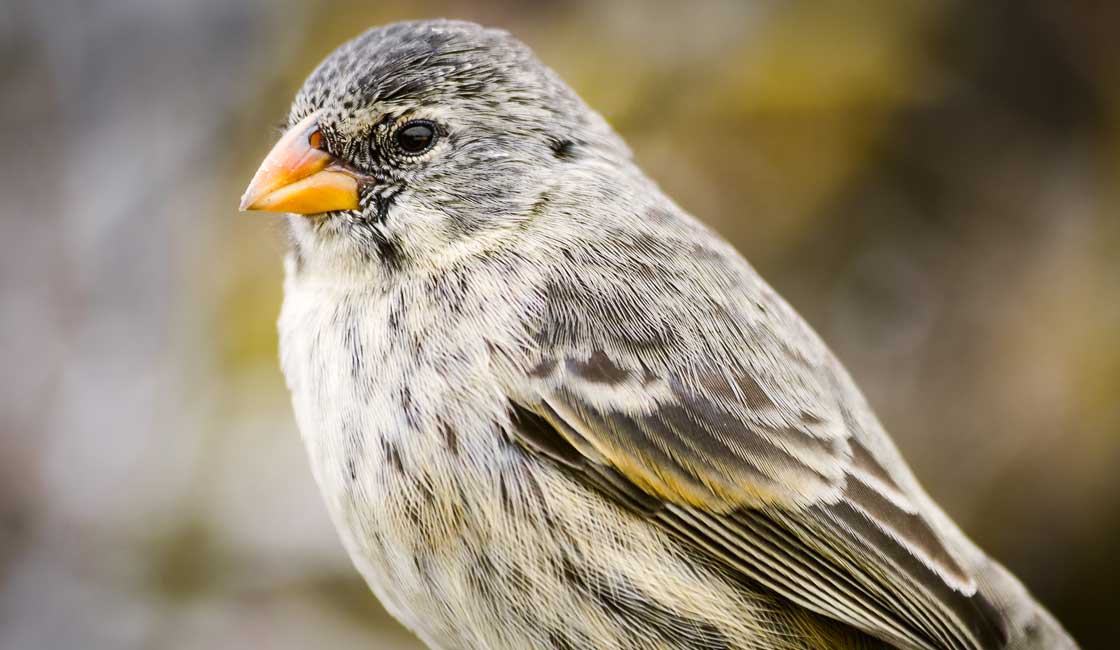
Galapagos Finch
This isn’t just one species of bird, but 13 unique species in total, all of them endemic to the islands and evolving from a single common ancestor. Galapagos finches are famous for their pivotal role in providing evidence for natural selection, so much so that they are often referred to as Darwin’s finches. Every species has a similar body type and coloration, yet each exhibits markedly different beak structures. This changes from island to island, demonstrating how each finch population evolved in isolation over thousands of years, adapting to the specific conditions and local food sources of their habitat. One example of a particularly pronounced adaptation is the ground finch – nicknamed the vampire finch – which evolved a very sharp beak enabling it to peck at the skin of reptiles or large birds in search of ticks, other insects, and even blood to feed on.
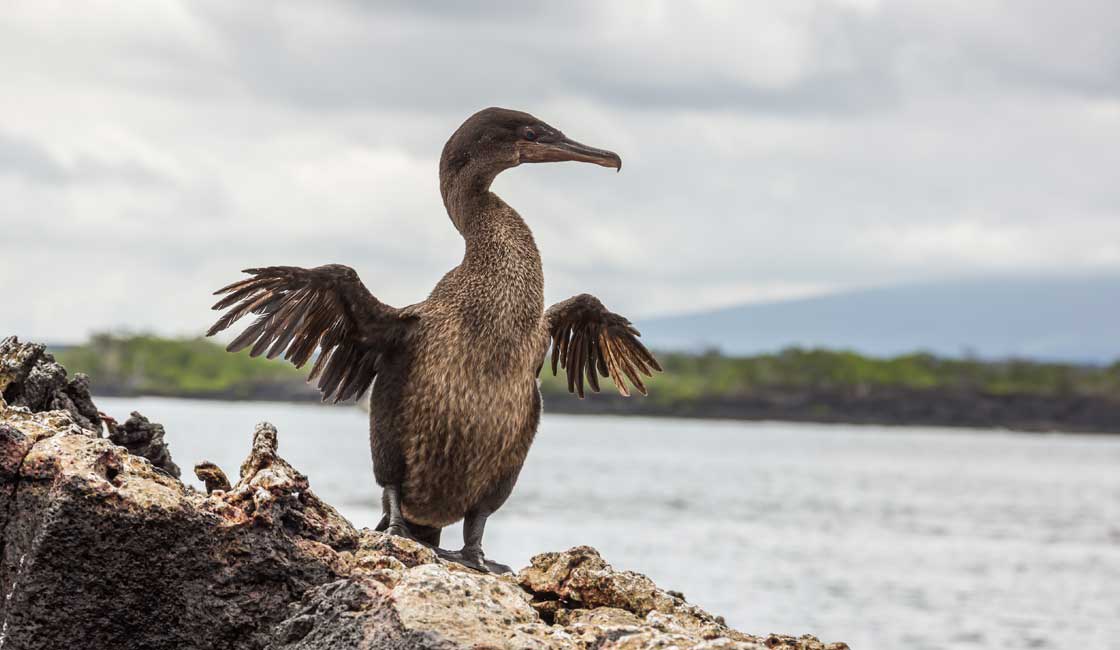
Flightless Cormorant
As the name suggests, the Galapagos flightless cormorant cannot fly, unlike all other species of cormorant found across the world. This presented a particular challenge to Darwin, who puzzled over how an endemic flightless bird could be living on the islands. In fact, the flightless cormorant’s ancestors could fly (and hence travel to the islands), but this ability was lost over time. This is likely due to a lack of natural predators which meant an ability to make a quick escape was no longer necessary. This adaptation makes the flightless cormorant a particularly unusual bird, growing very large and reaching weights up to 5 kilograms. A streamlined body, webbed feet, and long hooked bill make them especially well-suited to paddling, diving, and hunting for fish in the ocean. The introduction of non-native species presents a particular threat to flightless cormorants, especially from wild dogs, cats, pigs, and rats which prey on the bird’s eggs. As a result, only around 1,000 still exist on the islands today, making them one of the world’s rarest birds. You’ll need to head to either Fernandina or Isabela for a chance of spotting one.
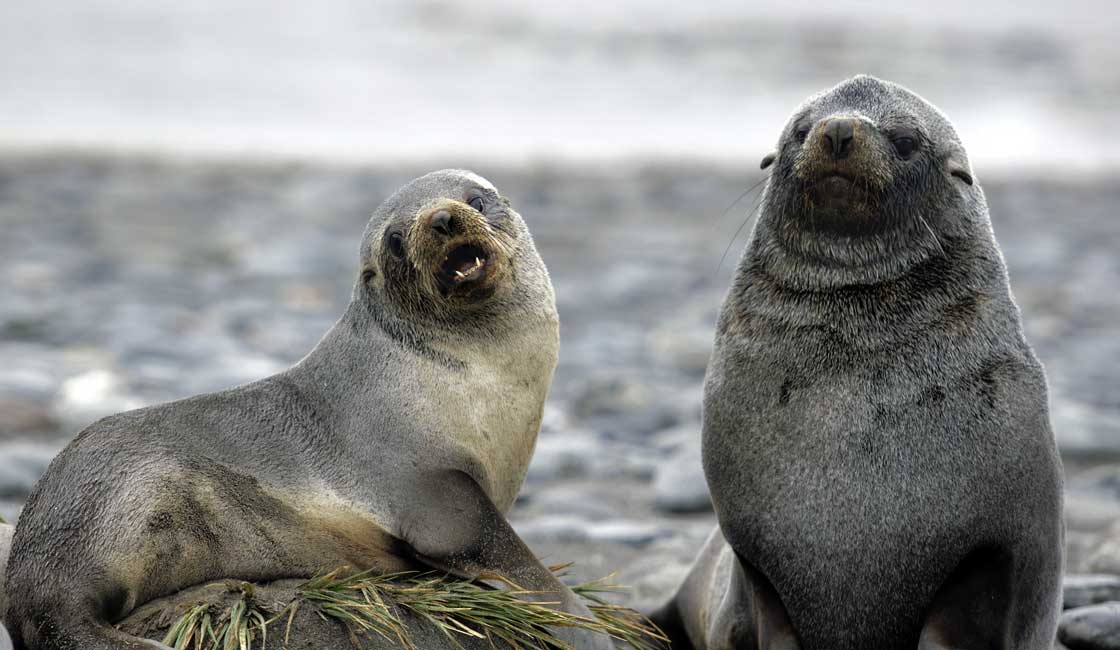
Fur Seals
Fur seals are the most famous endemic mammals of the Galapagos. They’re the smallest species of fur seal in the world but are actually more closely related to sea lions. They exhibit thick black or dark brown fur, pointed snouts, and small ears. You won’t fail to notice their presence on some of the islands you visit. They are one of the most land-loving of any seal species, again perhaps due to a lack of natural predators. Their numbers total around 40,000 and they can be found in huge colonies along rocky shores in places such as Isabela, Fernandina, and Santiago islands. Fur seals are especially known for their loud barking calls which reverberate far and wide and the males can become particularly noisy and territorial during mating season.
While Rainforest Cruises aim to provide accurate and up-to-date information, we make no representations as to the accuracy or completeness of any information herein or found by following any link on this site. Rainforest Cruises cannot and will not accept responsibility for any omissions or inaccuracies, or for any consequences arising therefrom, including any losses, injuries, or damages resulting from the display or use of this information.




